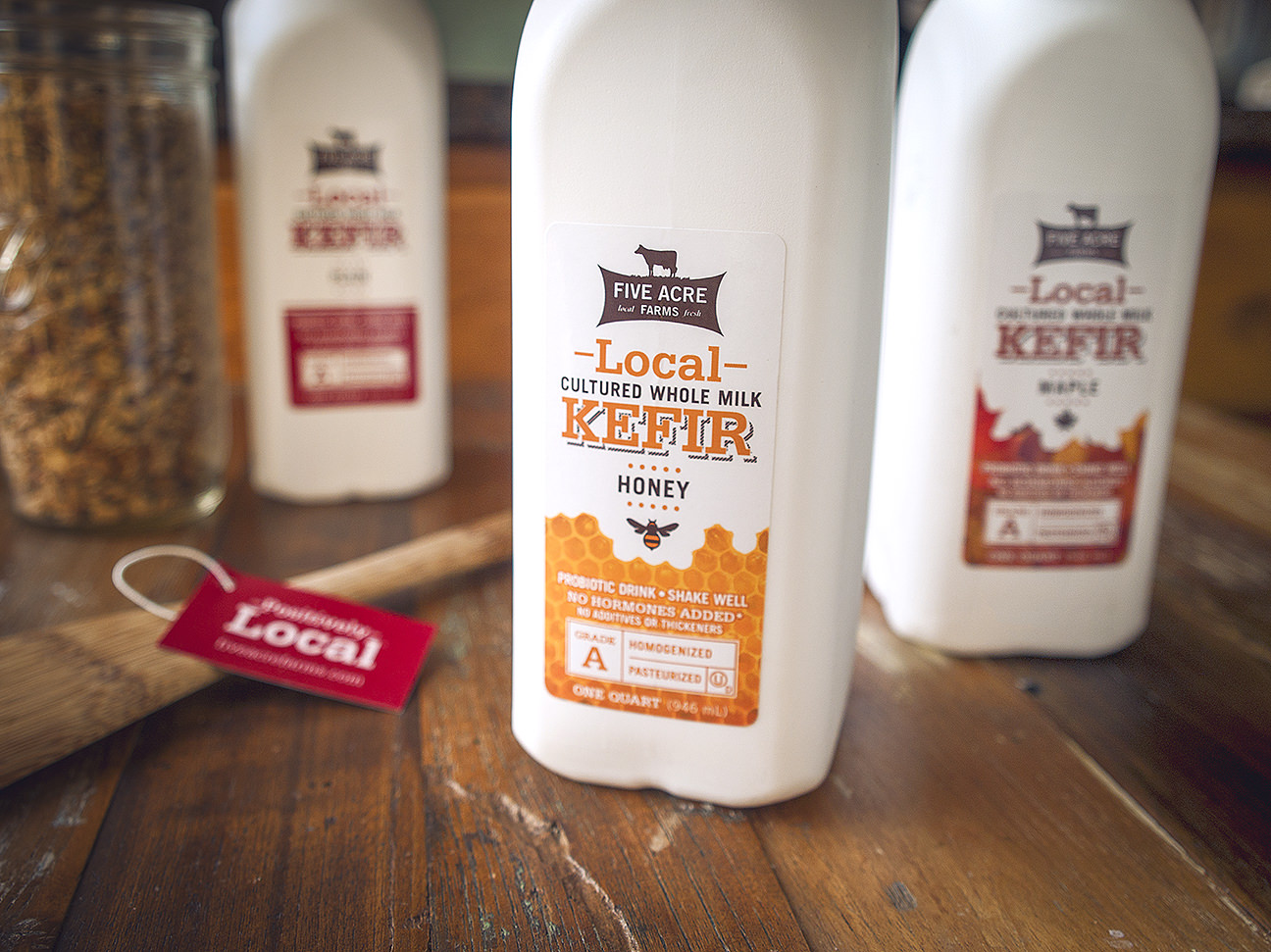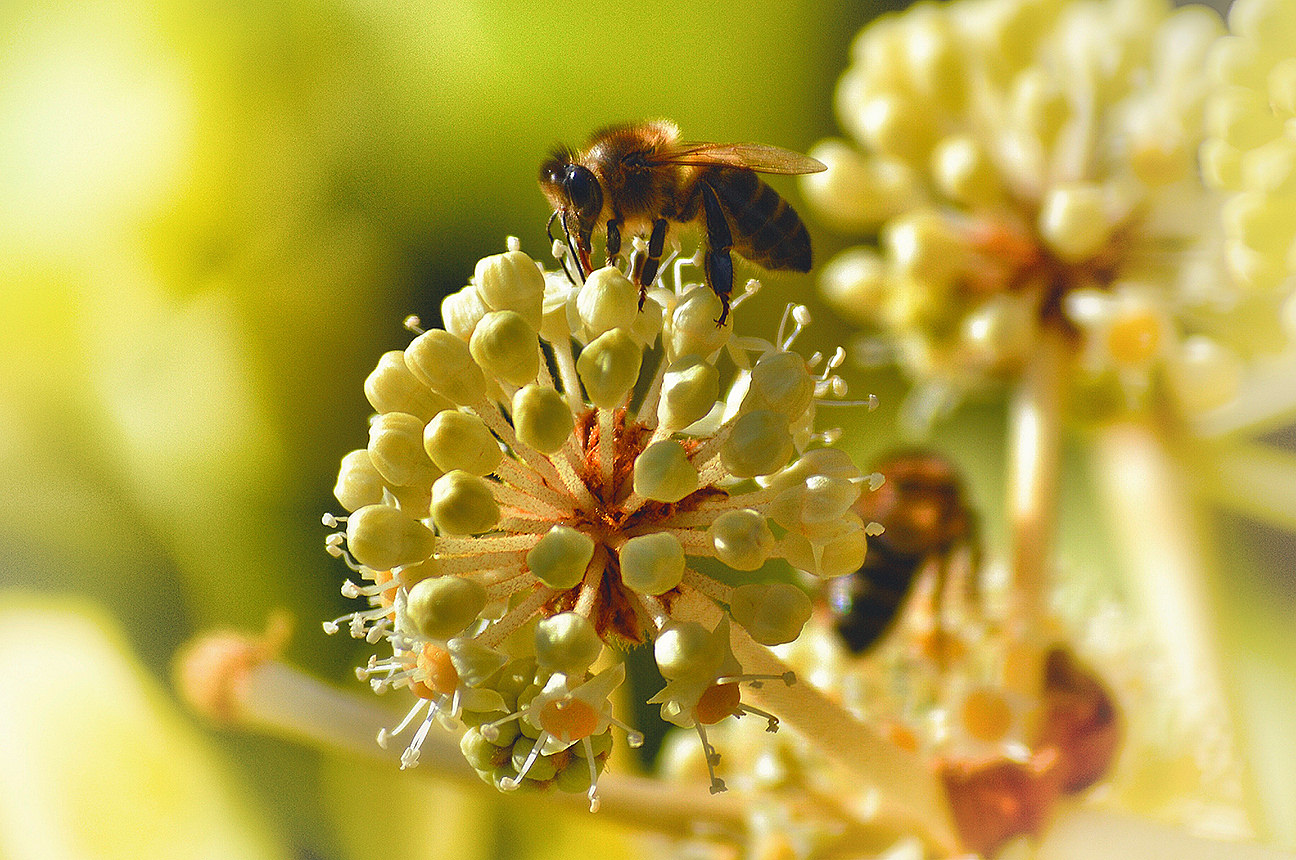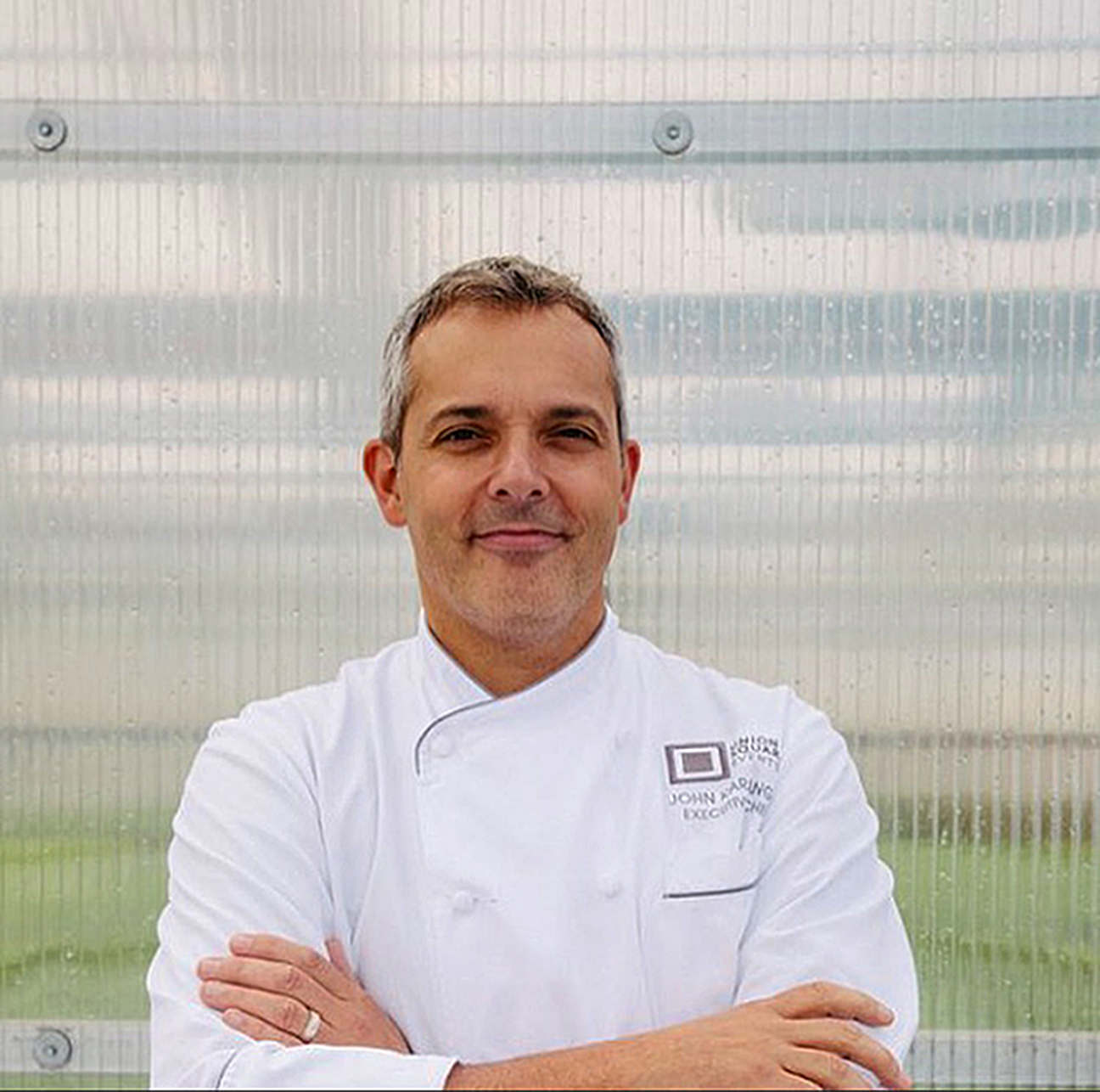![]()

Click to enlarge the photos below and follow the steps it takes to get our honey kefir to you.
![]()

Click to enlarge the photos below and follow the steps it takes to get our honey kefir to you.
![]()

Many Central California farmers rely heavily on honeybees to pollinate crops because there are few remaining habitats for native bees. In the Northeast, however, fields and orchards are often surrounded by plants, so native bees have plenty to eat and pollinate crops as they buzz from hedgerow to hedgerow. In a 2009 study of 11 apple farms in New York State, researchers counted 81 species of native bees.
Still, many larger farms rely on honeybees. So it was alarming when, about a decade ago, beekeepers began reporting disappearing honeybee hives. Previous plagues had left dead bees, but this time the worker bees abandoned the queen and her brood. Even when a colony is left with reserves of honey, it quickly dies off without worker bees. This phenomenon became known as colony collapse disorder or CCD.
In 2008, two years after CCD was discovered, the number of honeybee colonies hit its lowest point at 2.4 million. Happily, a queen bee lays 1500 to 2000 eggs a day, making honeybees one of the most resilient species on earth. With about 2.7 million colonies in the U.S. today, honey bees are making a slow comeback, though the causes of CCD remain unclear. Scientists continue to study a variety of factors including the interplay of pesticides, mites, and other pests.
So exactly how much effort goes into making honey? Worker bees must fly 55,000 miles and visit 2 million flowers to make one pound of honey, and the average colony makes 60 to 100 pounds a year. No wonder they’re called worker bees.
This small but mighty creature plays such a crucial role in our food system…and in making our Local Honey Yogurt and Local Honey Kefir so delicious.
![]()

INGREDIENTS:
• 1 pint of summer tomatoes, assorted sizes and colors
• 1 pint of summer tomatoes, assorted sizes and colors
• ¼ cup beluga lentils, raw
• ½ cup Five Acre Farms Local Honey Kefir
• 4 tbsp extra virgin olive oil
• 2 tbsp white balsamic vinegar
• ½ tsp kosher salt or fleur de sel
• 1 cup sliced cucumber
• 2 tbsp fresh marigold flower petals
• 1 jalapeno pepper (12 thin (1/16”) slices of jalapeno pepper, seeds included)
• 1 radish
• 6 asparagus stalks
• 8 green beans
• 1 cup of assorted local greens, whichever you desire (pea shoots, spinach, small basil leaves and celery leaves)
1. To cook lentils, simmer them in 2 cups of water with 1 tbsp salt until just cooked through and drain and cool. Set aside.
1. To cook lentils, simmer them in 2 cups of water with 1 tbsp salt until just cooked through and drain and cool. Set aside.
2. Wash all vegetables and cut them into desired shapes. Not all things should or need to be cut equally. Both larger and smaller chunks of tomatoes are nice to have.
3. Shave the radishes and jalapeno peppers thin enough (1/16”).
4. Blanch asparagus in boiling salted water for 15 seconds. Allow to cool before cutting into two-inch pieces.
5. Wash and dry greens with absorbent towels.
6. Drizzle a copious amount of honey kefir on your individual plates or serving platter. Separately, in a mixing bowl, add all of your greens, veggies, salt, half of the vinegar and half of the olive oil and carefully mix to incorporate and taste. Adjust the seasoning if you think it needs more of anything. In a separate bowl, add additional seasoning of oil, salt and vinegar to the lentils.
7. Carefully (or less carefully) assemble your dish to your desired effect.
8. Add on the marigold flowers last because they are incredibly delicate.

Early in his career while studying Fine Dining Management, John recognized his passion for cooking and was accepted as a culinary student under Chef Andre Daguin and Chef Yves Pinard in Paris. Upon returning to the United States, John landed a job in the kitchen at UNION SQUARE CAFE under Chef Michael Romano, where he cooked for three years. From there, he worked in some of the most acclaimed kitchens on the West Coast and in New York, including GRAMERCY TAVERN and SQUARE ONE in San Francisco. He then accepted the role of Executive Chef at RESTAURANT ASSOCIATES, and later at GOLDMAN SACHS, delivering world class dining and hospitality to an elite clientele. Returning to the culinary roots where his career began, today John brings his passion for excellence and hospitality to the UNION SQUARE EVENTS team.